Armored Core VI keeps kicking my ass and for some reason, it continues to bring me back time after time; largely because the mecha-battling action is so good.
Generally speaking, I’m not big on the overall approach with FromSoftware games. Don’t get me wrong, I greatly appreciate all the things they’ve done in terms of technical achievements and story…I just can’t get into most “Souls-like” games.
Armored Core VI: Fires of Rubicon
Developed By: FromSoftware, Bandai Namco Entertainment
Platforms: PlayStation 4|5 [Reviewed on 5], Xbox Consoles, PCs
Release Date: August 25, 2023
Call me a weenie, but at this point in my life (with kids and shorter windows of play time), I prefer my gaming to be relatively stress free. I enjoy a decent challenge every now and then, but being stuck on the same boss for days at a time just isn’t appealing to me anymore. I’ve got things to do, kids to raise, and need my games to make me feel relaxed.
Armored Core VI (AC6), however, is proof positive that if you wrap a game in some pretty mecha action I simply won’t care about my normal preferences. At the time of this writing, I haven’t completed the game just yet. I know, that seems wrong, but having only gotten the code to review the game just a day before launch, time was against me. To be fair, even getting it a few WEEKS earlier would have been no guarantee I’d be done. The game is tough.
While it’s not quite on the same punishing level as the Souls’ games or Elden Ring, AC6 isn’t messing around, and even tiny mistakes can be costly. That said, I’ve gotten through enough of the game, it’s story and mechanics, to feel comfy talking about it. Especially as I’m having more than enough fun to know I’ll be playing this one for a while (even once the credits roll).
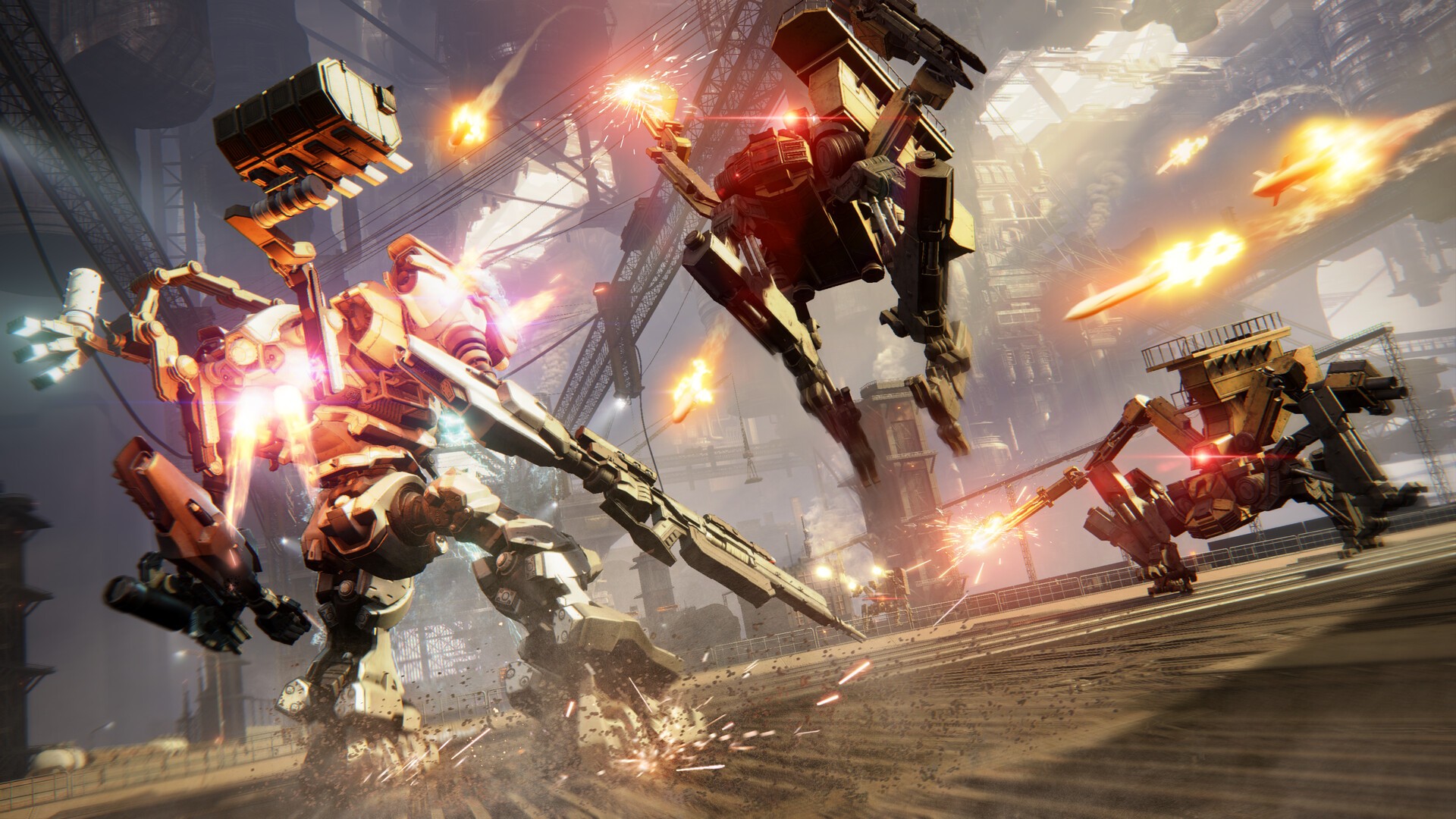
Story Basics
Armored Core VI brings the franchise to the modern era, but don’t worry if you haven’t played any of the previous games. The long-running gaming series hasn’t exactly been a stickler for continuity, with Armored Core 3-5 essentially rebooting the story in its own way, rather than continuing what came before.
Aside from some of the spin-off titles in the franchise, the Armored Core games work as their own standalone titles. Pretty much the only thread connecting them all together, however, are the high-tech mechas that you can customize and battle across various futuristic landscapes.
To that end, Fires of Rubicon takes a bigger departure from the other games in the series. Instead of taking place on a future Earth, you’re on an entirely different planet. Set far in the future, where humanity has developed an interstellar civilization, the game puts you on the ravaged surface of Rubicon 3.
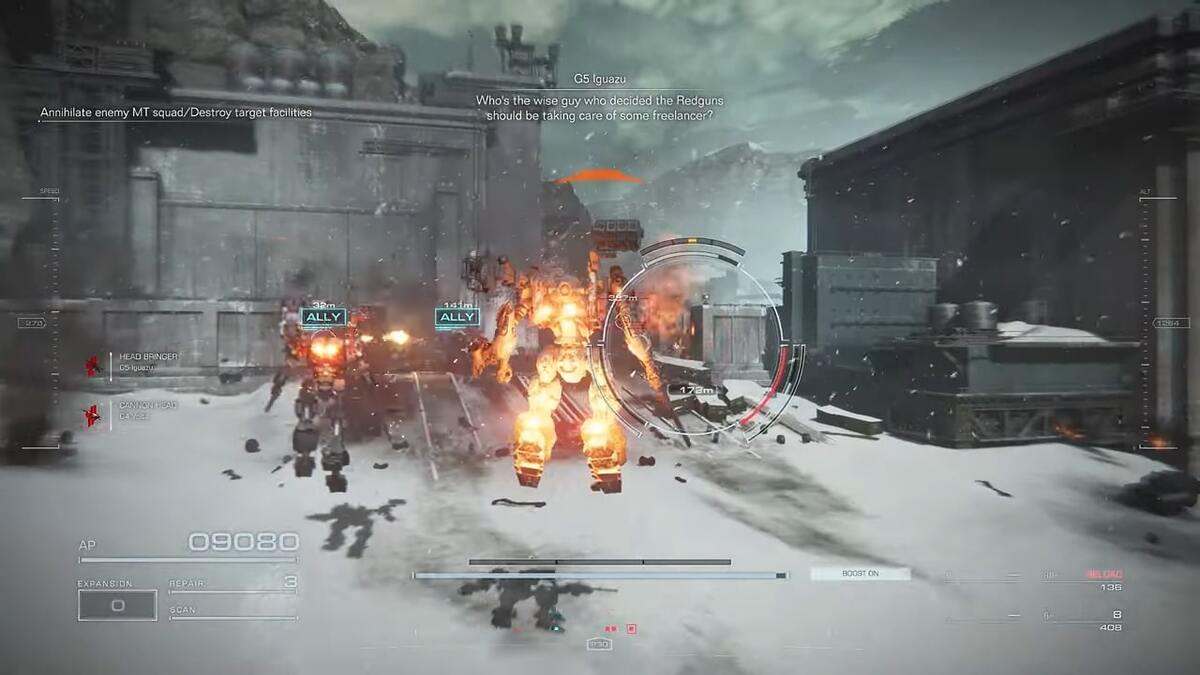
Fifty years prior, the planet was the scene of a cataclysmic event related to the natural resource it housed known as “Coral.” Seen as the key to humanity’s next step forward, when Coral is once again detected on the planet’s surface, companies around the galaxy flood in to try and take advantage of it. The result is a war between mega-corporations and a ragtag group of rebels known as the Rubicon Liberation Front, duking it out along with the help of these mercenaries using futuristic weapons and ‘Armored Core’ rigs.
This is pretty much where you come in; essentially a nameless protagonist (going by the designation 621) who sneaks onto the planet with the aid of a handler in order to make some money…At least, that’s what it starts out as. As you arrive on the surface and begin developing your reputation as a mercenary, you’ll undertake a variety of missions that will see you help (and come against) a variety of allies and villains.
For the sake of avoiding spoilers, I won’t dive into it much more than this. There are some interesting twists and turns, with a dash of political subterfuge thrown in, that keeps you on your toes, along with the various characters you meet.
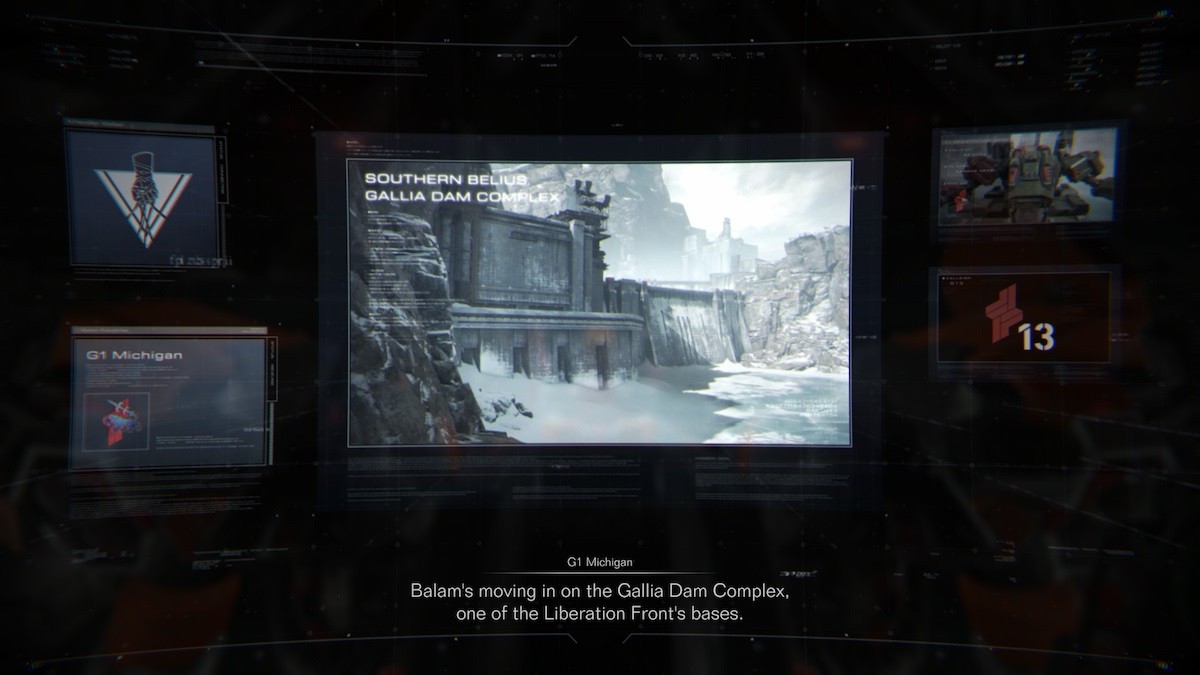
It’s got some fun stuff in there and at its best moments felt like I was reading some old-school Sci-Fi with a touch of Metal Gear thrown in. The biggest problem, however, is in the presentation of it all. Pretty much every piece of story given to you, is presented via “messages” or “briefings” between missions. They’re just some images with voice over of characters talking about stuff. It’s almost like sitting through a Metal Gear Solid Codec discussion, but you don’t even have the benefit of seeing images/avatars of the characters’ talking heads.
It’s in line with the rest of the franchise and not something long-time fans will take issue with. Personally, I didn’t mind as the action within the missions themselves were engaging enough. Even so, there’s a certain detachment from the story because of this. Rather than feeling as if you’re taking part in the adventure, you’re merely being told about it. Even as you do something epic within the game, there’s a distance between your actions and the effect it has on the story.
The game itself seems to understand players aren’t exactly there for the story, and gives you the option to skip…well, pretty much everything in terms of dialog and “cutscenes.” As in-depth as the story gets, however, it just seems strange that so much of the story and key moments with characters feel like a secondary thought.
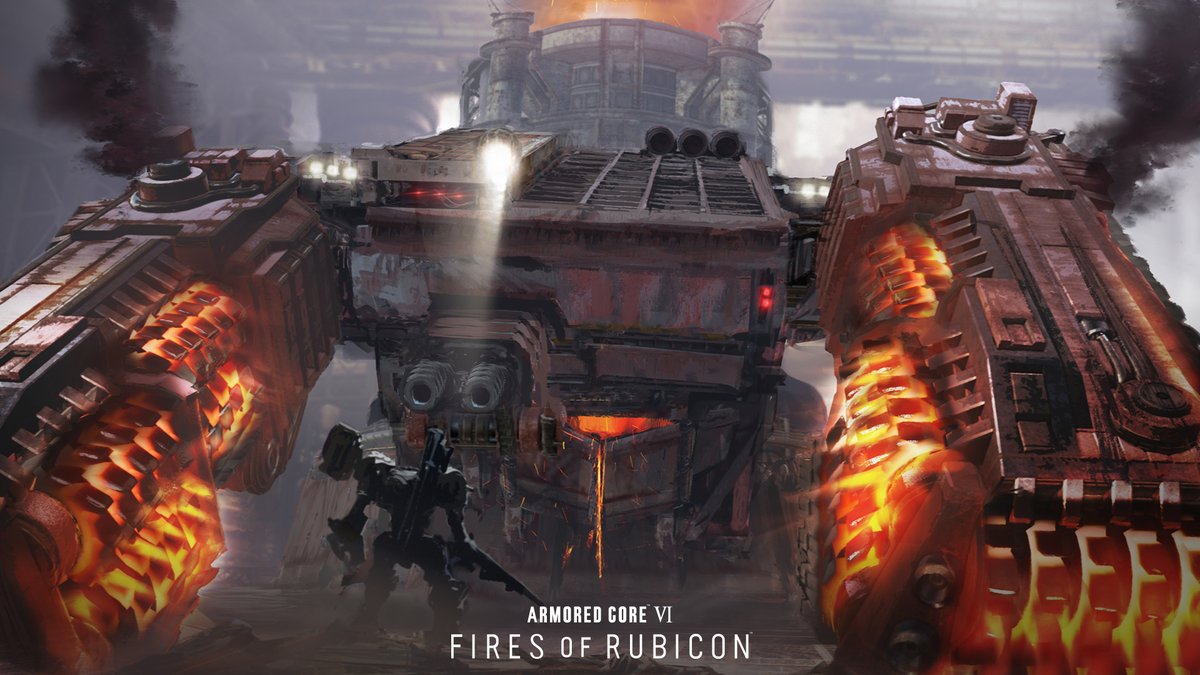
True Grit
The meat and potatoes of AC6 is, without question, the mecha action. In this, the game goes above and beyond in its delivery. Every mission/battle feels epic in its own way. Even if you’re just mopping up some low-level mechs en route to a mission objective, there’s a thrill and sense of power.
The game does an incredible job of making the action feel both grounded and intense. The way you mecha moves gives a sense of weight and heft. Coupled with the timing of rounds being fired/reloaded and monitoring your thrust levels, and there’s a real feeling of these things being real machines that are working according to your commands.
As you play the game and get accustomed to how your Armored Core moves, you get a very real sense of the timing in all your motions. When you swap out parts (which we’ll discuss more shortly) and upgrade weapons, there’s a noticeable difference you have to adjust to. Almost like how it feels when you drive a different car and notice the subtle changes in how it turns, brakes, etc. this is how you come to feel about controlling your Armored Core. It’s a wild sensation and ridiculously impressive the more I think about it.
The result of this, is every combat encounter feels significant. The thrum of your rifle shooting to a far off target, as your unleash a barrage of missiles at a nearby turret, right as you hit the boost thrusters to close the distance for a devastating melee attack…It’s just cool.
At one point, early in the game, you’ll go up against a massive mechanical walker where you literally traverse it’s walking frame as you take out key structures (and weapon installments) in order to put it down for good. The result is something cinematic and epic that left me feeling breathless and like a total badass. It’s like that all throughout the game, and even replaying missions later on still brought that same feeling with each playthrough.
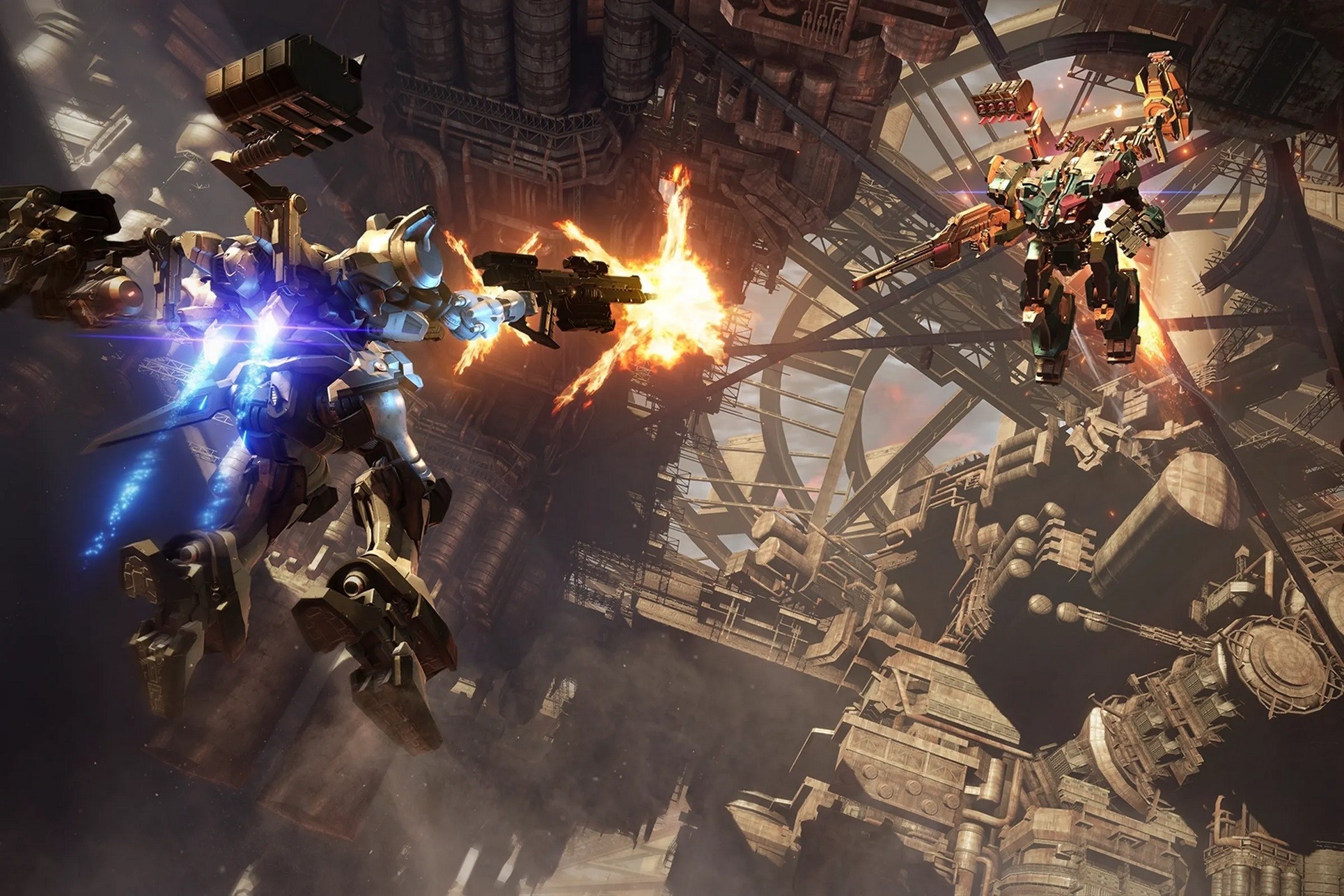
You Gotta Be Tough
As one would expect with a FromSoftware title, Armored Core VI isn’t for the faint of heart. That said, if you’re looking for the challenge of Elden Ring or the Souls games, you won’t find it here. While the game is tough and absolutely punishes mistakes, it doesn’t go out of its way to be brutal either.
In those other games, you can’t run into a situation all willy nilly and button mash your way to victory. No, even the “grunt” enemies require a level of finesse to approach. AC6 takes a hybrid approach. Through much of the levels, there are certainly moments and enemies you can simply power your way through like in any typical action game. Every now and then, however, it throws an opponent at you (or you find yourself surrounded) which forces you to strategize and think your way through.
More than anything, the game really wants you to become intimately familiar with the controls and abilities of your mech. Getting the basics down (I HIGHLY suggest doing all the training missions it offers you) ensures you’re able to analyze a combat situation without getting hammered for it as you contemplate your best attack approach. This is made clear by the game’s first boss in the tutorial section which manages to be among the toughest fights in the game. Get through that, though, and you’re good.
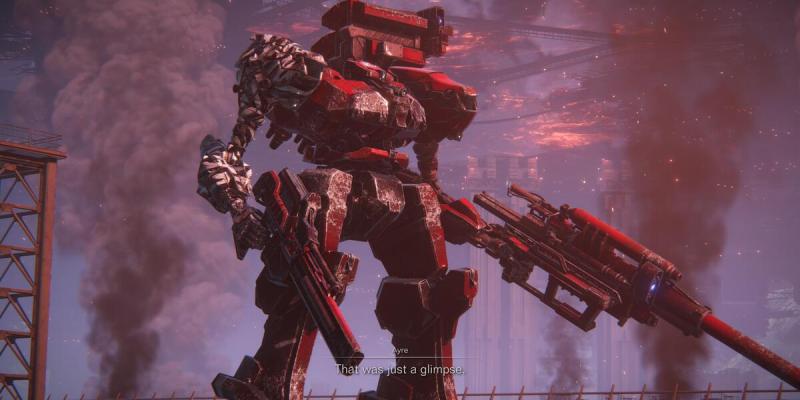
For me, one of the things that made the difficulty more palatable (and less frustrating even on my limited play schedule), where the mission designs themselves. It’s not an open-world experience and you’re dropped into singular mission areas each time. Missions themselves aren’t particularly long and some can be completed in a handful of minutes.
So even when you mess up or get your butt handed to you, redoing a mission isn’t some big ordeal. Even on the longer sorties, I found the built-in checkpoint system was generous enough in its frequency (plus you restart with all your repair kits replenished) to not feel like I had to re-tread the same ground. Hell, most of the time it’d put a checkpoint right before a boss so you can hop back in at the beginning of the fight with all your health when you have to restart.
The result is that, even as tough as it can be at times, it still feels like a game you can pick up and play a quick mission and put it back down. Investing more time into a mission doesn’t feel like a waste even when you die. This fits my general play style as I sometimes only have 20-30 minutes to sit down a play in a single session. On those moments I do have longer, it’s easy to feel like you’ve made a lot of progress.
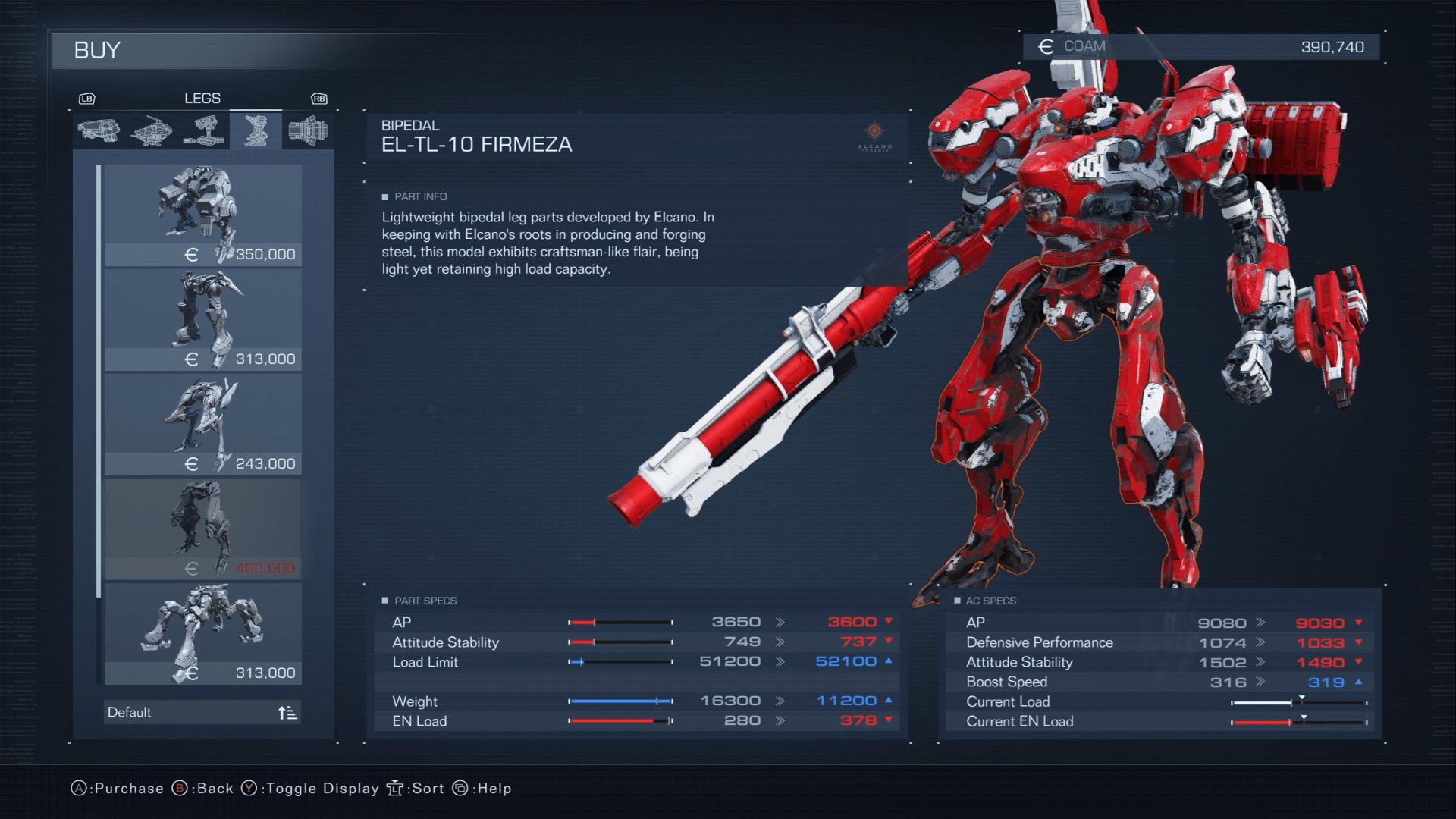
The Mecha of Your Dreams
Easily one of the biggest highlights of AC6—and Armored Core in general—is the ability to customize your unit to your hearts content. Everything from the head, chasis, legs/arms, and what you equip on each of them can be swapped out using parts you discover on missions or purchase at the shop.
Here’s the thing, these changes aren’t just for cosmetics sake (though there are even MORE options to adjust your paint details and even fully create your own designs/emblems to walk around with). Each modification has a real impact on how your mech functions and plays.
There are a number of things to keep an eye on, and I’d suggest taking time during one of your sessions to really sit down and look at all the stats available and how they impact your personal combat. One of the main things to consider is the overall weight of your machine. You can equip your rig with all the heavy stuff in order to essentially make it a stout tank…but it’s going to move like one too. You’ll walk slower and your boosters won’t take you as high/far.

Conversely, you can go with a lighter frame that’ll have your zipping around maps and evading enemy fire like no one’s business. There are downsides to both (the lighter you are the less damage you can take) and that doesn’t even factor in the various weapons, shields, and missiles you can sort through.
The point is, even making a minor change can dramatically impact the overall feel of your mecha and how your fight. At first, it’s a bit daunting. The wealth of adjustments you can make even early on are a lot, but as you begin to figure out the systems, it becomes a lot of fun. Hell, there are plenty of moments where I spent more of my “play” time customizing my mecha than actually within a mission…and it was still a lot of fun!
The important thing to note here is that the game almost actively discourages you from sticking with a single AC build. Like many gamers, I get a set of equipment I like in a game and can use effectively, and I tend to stick with it; making small changes only as needed when more powerful stuff becomes available.
![]()
In Fires of Rubicon, you can’t really do that. Sticking to a singular build and playstyle here is a surefire path to frustration. Different bosses will have different weaknesses to exploit which can only be done by changing out your whole rig. Even at your best, with a familiar setup and mastery of the controls, going against a unit with the wrong gear can end disastrously and in utter humiliation.
Don’t get married to one layout and you’ll be fine. Experiment with different setups to see what works best against different enemies (this is where replaying older missions come in handy).















